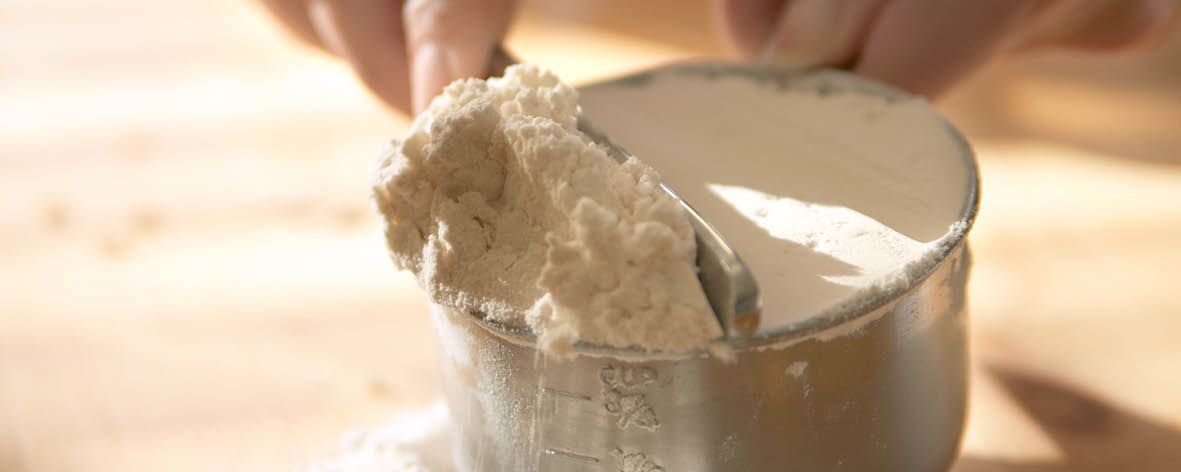How to measure flour … kitchen helper

You’re probably wondering why we would offer tips on how to measure flour, I mean it’s pretty basic, right? Wrong! It turns out that measuring a cup of flour is a little more complex than it seems. Read on to find out why.
When you’re cooking and a recipe calls for a cup of flour, how much do you put in? Do you use a cup measure? Do you weigh the flour? And do you factor in the origin of the recipe? These things can all impact the success of your cooking. Let’s explain why. To start with if you are using an American recipe the standard weight of an American “cup of flour” is different to the standard weight of an Australian cup of flour. An American cup is equal to 0.95 cups in Australia, so if you are using a recipe from the US, you need to slightly reduce the quantity of flour that you use.
A standard cup in Australia has a 250ml capacity which equates to 125 grams of flour. But if you don’t have scales, how do ensure you hit that magic 125 gram mark? Many people use the method of dunking the measuring cup into the flour and using a knife to smooth it off to a straight edge, but this method leads to an overpacked cup with nearly 50 grams more flour pushed into the cup. Instead the best method is to aerate your flour with a spoon and then use the spoon to add flour to the cup, overfilling past the top. Then use a knife to sweep off excess flour to a straight edge. Using this method will ensure that your cup of flour weighs very close to the desired 125 grams.
So measuring flour isn’t as simple as you may have thought. And if the wrong technique has seen you inadvertently adding extra flour into your cooking, that may help to explain why you’ve sometimes had recipes that have turned out too dry, too dense or too crumbly even though you have followed the recipe carefully. Now with your newfound knowledge you’ve got the best chance of baking success.

